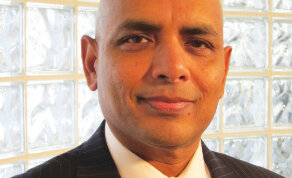The evolution of STEM in education
In an era when technology and innovation are the cornerstones of progress, the role of STEM education — science, technology, engineering and mathematics — has never been more critical. As superintendent of Freeport Public Schools, I am proud to reflect on how our district has embraced and advanced STEM education, transforming it from a specialized field into an essential component of our curriculum that prepares students for the challenges and opportunities of the future.
In its early days, STEM education was focused primarily on cultivating foundational skills in science and math. Coding classes, once a novel addition, marked the beginning of a significant shift. Students learned not only how to program, but also how to think logically and solve complex problems.
As technology advanced, so did our curriculum. We began incorporating more sophisticated elements, including robotics, science research, aeronautics engineering, naval science and data analysis, making STEM more engaging and applicable to real-world scenarios.
The introduction of artificial intelligence and nanotechnology into the curriculum has been a game-changer. AI, with its ability to mimic human intelligence, learn and solve problems, has opened new avenues for students. They are no longer just users of technology; they are innovators and creators, developing algorithms and systems that can transform industries.
Nanotechnology, the manipulation of matter on an atomic or molecular scale, is revolutionizing industries from medicine to energy by enabling the creation of new materials and devices with unprecedented capabilities. By integrating nanotechnology into our science programs, we provide students with hands-on experiences that illustrate the vast potential of this technology. In the fall, we will introduce Quantum Information Science, which explores the behavior of matter and energy at the quantum level, and acquaint students with concepts that will define the future of technology, from quantum computing to advanced cryptography.
Our schools have embraced this evolution wholeheartedly. Our Science Department has been at the forefront of integrating cutting-edge STEM education into our classrooms. Our collaboration with NASA is a testament to this commitment. Students have engaged in projects that not only pique their curiosity, but also enabling them to contribute to real scientific research. They have had unique opportunities to work on experiments that simulate space missions, fostering a deeper understanding of space science and engineering.
One of the highlights of our STEM journey was our recent project involving the solar eclipse, in which students designed and conducted experiments to observe and analyze the solar phenomenon in real time. Such hands-on experiences are invaluable, not only enhancing learning, but also inspiring students to pursue careers in science and technology.
Looking ahead, the future of STEM education is both exciting and challenging. We are on the brink of integrating even more advanced technologies into our curriculum. The rise of AI and interdisciplinary approaches is becoming increasingly important. The lines between STEM disciplines are blurring, and the integration of arts into STEM, resulting in STEAM, is enriching our educational landscape. This expanded approach nurtures creativity alongside technical skills, preparing students to innovate in ways we can only imagine today.
The achievements of our Science Department are a beacon of what is possible when vision and dedication build on opportunities. Our students’ successes in NASA projects and their investigative work during the eclipse are just two examples of the extraordinary potential we are unlocking. These accomplishments aren’t just about accolades; they are about building a foundation for lifelong learning and curiosity.
As we move forward, our vision is to continue expanding these opportunities. We aim to provide every student with access to state-of-the-art resources and mentorships from experts in various STEM fields. Partnerships with organizations such as Stony Brook University and Vaughn College will be instrumental, allowing us to offer experiences that go beyond the traditional classroom setting.
The transformation of STEM education from its early days to the present has been remarkable, and the future holds even greater promise. Freeport schools are proud to be leading the way on this journey, equipping our students with the resources, skills and knowledge they need to excel in a rapidly changing world. The integration of AI, quantum science, and hands-on projects exemplifies our commitment to providing an education that is both innovative and relevant.
STEM isn’t just an acronym; it is a pathway to the future. Through our dedicated efforts and the unwavering curiosity of our students, we are shaping a world in which technology and innovation go hand in hand with creativity and critical thinking. Together we’re building a brighter future, one experiment, one project and one student at a time. The future is bright, and the possibilities are endless.
Kishore Kuncham is superintendent of Freeport Public Schools.






